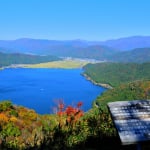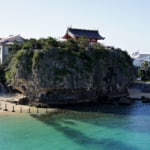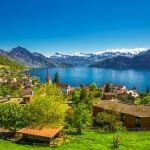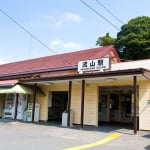Name: Hiroshima Miyoshi Winery
Address: 445-3 Higashi-Sakaya-cho, Miyoshi City, Hiroshima Prefecture
Official/Related Site URL: http://www.miyoshi-winery.co.jp/

Recommended Tourist Spots in Miyoshi City | Wineries, Museums, and Ancient Tomb Town Attractions?
Miyoshi City is a treasure trove of historic sites, home to about one-third of all ancient tombs (kofun) in Hiroshima Prefecture. It also boasts a rich collection of cultural facilities, such as museums and art galleries. In the city center, traditional white-walled streets and houses with udatsu (fire-prevention gables) still remain, creating a charming tourist destination where modern townscapes and ancient history coexist.
The entire Miyoshi area flourished as a branch domain of the Hiroshima Domain under the Asano clan, known as the Miyoshi Domain. From the Meiji to Taisho periods, it also prospered as a post town, and remnants of that era can still be seen today. In spring, the Wakamiya Hachimangu Shrine in Tokaichi is a popular cherry blossom spot, while in autumn, Ozeyama Park in Miyoshi City is well known for its beautiful autumn leaves that delight tourists.
In addition, there are many scenic natural locations, such as Jinseikyo Prefectural Nature Park. Here are some of the must-visit sightseeing spots in this captivating city of Miyoshi.
table of contents
[x] close
Recommended Tourist Spots in Miyoshi City | Wineries, Museums, and Ancient Tomb Town Attractions?
- 1. Sample Miyoshi Grapes Wine and Tour Hiroshima Miyoshi Winery
- 2. Try Doll Making at the Doll Museum of One of Japan's Top Doll Artists, Jusaburo Tsujimura
- 3. Touch Ancient Romance at the Historical Miniature Garden, Hiroshima Prefectural Miyoshi Fudoki Hill
- 4. Kimitani Onsen Mori no Izumi – A Beautiful Natural Hot Spring with Skin-Smoothing Effects
- ◎ Summary
1. Sample Miyoshi Grapes Wine and Tour Hiroshima Miyoshi Winery
All across Japan, there are regions known for producing high-quality grapes, and where there are great grapes, there are great wineries. The Miyoshi Basin in Miyoshi City is one of Hiroshima Prefecture’s top grape-producing regions, and home to the Hiroshima Miyoshi Winery, which uses 100% locally-grown grapes.
Wines made from grapes grown and harvested in their own vineyard are named the TOMOE series. These wines have won gold medals in domestic wine competitions in Japan and have also received awards in international contests, proving their outstanding quality and flavor.
The Hiroshima Miyoshi Winery opens part of its facilities to tourists. You can observe the winemaking process, tour the underground cellar, and of course, enjoy wine tastings. For children, grape juice is provided. Outside, there is a BBQ garden where you can enjoy Hiroshima black wagyu beef with wine. You can also try soft serve ice cream made with Pione and white grapes.
2. Try Doll Making at the Doll Museum of One of Japan's Top Doll Artists, Jusaburo Tsujimura
Miyoshi City has been the birthplace of numerous traditional performing arts and cultural expressions, many of which can be enjoyed at museums, archives, and art galleries. One of these is the Jusaburo Tsujimura Doll Museum. Tsujimura is a leading figure in Japanese doll art, known for creating puppets for the NHK puppet show “Shin Hakkenden.”
He spent his youth in Miyoshi City until the age of 22 before moving to Tokyo. It is said he was already crafting dolls from chopsticks as a child. In addition to dolls, Tsujimura has been active in kimono design and creating costumes for stage and film. The Jusaburo Tsujimura Doll Museum offers a look into his artistic world.
A new gallery named “Momen Usagi” opened in 2016 about a 7-minute walk from the museum. It hosts workshops, including doll-making classes. Why not try your hand at making your own doll as a memory of your visit to Miyoshi?
Name: Jusaburo Tsujimura Doll Museum
Address: 1236 Miyoshi-cho, Miyoshi City, Hiroshima Prefecture
Official/Related Site URL: http://www.mhst.jp/jusaburo/jyusaburo_miyoshi.htm
3. Touch Ancient Romance at the Historical Miniature Garden, Hiroshima Prefectural Miyoshi Fudoki Hill
In the late Yayoi period, the ancestors who lived in the Miyoshi Basin perfected a unique tomb style called the square cornered mound. They built numerous burial mounds in this area, such as the Jorakuji and Nanatsuzuka Kofun groups. Miyoshi is often referred to as a “kofun Ginza,” as about one-third of all burial mounds in Hiroshima Prefecture are located here.
Hiroshima Prefectural Miyoshi Fudoki Hill was established to preserve these kofun and allow tourists to feel the romance of ancient times. In addition to kofun designated as national historic sites, you can find reconstructions of pit dwellings and raised-floor dwellings from the Kofun period, exhibitions of stone chambers and sarcophagi, the former Mano family residence designated as an Important Cultural Property (believed to be from before the Edo period), and the remains of the To-no-Maruyama ironworks site.
Truly a miniature garden of history, this site allows visitors to experience ancient romance for free (though the Folk History Museum requires an admission fee).
Name: Hiroshima Prefectural Miyoshi Fudoki Hill
Address: 122 Kodako-cho, Miyoshi City, Hiroshima Prefecture
Official/Related Site URL: http://www.pref.hiroshima.lg.jp/site/rekimin/fudokinooka.html
4. Kimitani Onsen Mori no Izumi – A Beautiful Natural Hot Spring with Skin-Smoothing Effects
One of the joys of travel is hot springs! The most famous onsen in Miyoshi City is “Kimitani Onsen Mori no Izumi,” located in Kimitacho and part of the roadside station “Forest Kimitani.”
This bicarbonate spring gushes from a forest downstream of the Jinseikyo Gorge and is known as a “beautiful skin bath” that leaves your skin silky smooth. The milky white water is piped directly from the source into the baths, so the opacity may vary by day. It’s said to help not only with skin beautification, but also neuralgia, sensitivity to cold, and chronic skin conditions. Mori no Izumi is a day-use hot spring facility, but it also has Japanese-style and Western-style accommodations, making overnight stays possible.
There are also cottages for a camping-like experience, making it a great base for sightseeing in Miyoshi City. Next door, the Haramichio Art Museum features heartwarming works of art. Enjoy a soul-soothing journey with this top-tier hot spring.
Name: Kimitani Onsen Mori no Izumi
Address: 311-3 Izumiyoshida, Kimitacho, Miyoshi City, Hiroshima Prefecture
Official/Related Site URL: http://www.kimita-onsen.com/
◎ Summary
Miyoshi City is divided into three main areas: “Kimitani, Funo, Sakugi,” “Kisa, Sera, Sanwa, Kōnu,” and “Miyoshi Town.” Each area has its own must-visit tourist spots. Throughout the city, you’ll find weeping cherry blossom spots, and the sunflower fields of Fujikane in Kimitacho are the largest in western Japan—a hallmark of summer in Miyoshi.
Equally famous is the field of red spider lilies in Tsuji, Kisa Town. It’s the largest in the Chugoku region, with the whole area dyed deep crimson. Miyoshi is also home to Japan’s largest population of the vividly colored fairy pitta, often called the “jewel of the forest.”
There are many experience-based facilities that create lasting memories, such as the bamboo craft studio in Sera Town and the origami museum in Kimitacho. For those who love spicy food, try the local B-grade gourmet dish “Miyoshi Kara Men-yaki,” a type of okonomiyaki available at many restaurants across the city.
RELATED ARTICLES
REGIONS
CATEGORIES
FEATURED ON Hiroshima
-
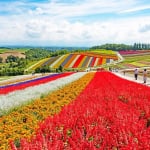
Where will you go for the summer vacation? Introducing recommended spots for domestic travel
-
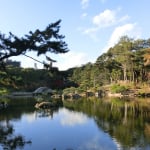
A Chill Spot in Hiroshima City!? A Complete Guide to the Highlights of Shukkeien Garden
-
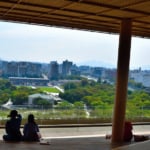
【Hiroshima】Tourist information for Orizuru Tower|Introducing sightseeing spots in the city center
-
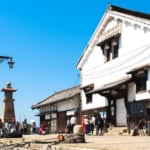
6 recommended tourist spots in Tomonoura, a historical area in Fukuyama City, Hiroshima Prefecture
-
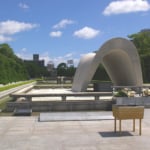
Tourist information on Hiroshima Peace Memorial Park|Introducing the highlights!
MOST POPULAR ON Hiroshima
-
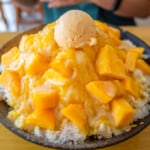 1
1The Top 5 Places to Eat Mango Shaved Ice in Taipei
-
 2
2The Top 5 Molecular Gastronomy Restaurants You Need to Visit Around the World
-
 3
3The Top 10 All-American Food Souvenirs to Buy in the USA
-
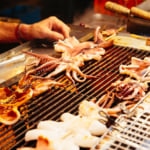 4
4A Guide to Taiwan’s Night Markets: Taiwanese Street Food to Eat and Best Markets to Visit
-
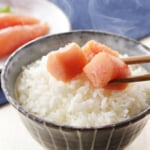 5
57 Foods and Snacks You Should Try When Visiting Fukuoka

